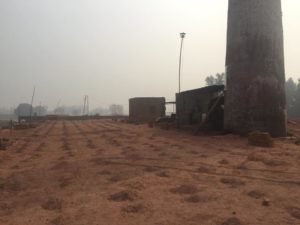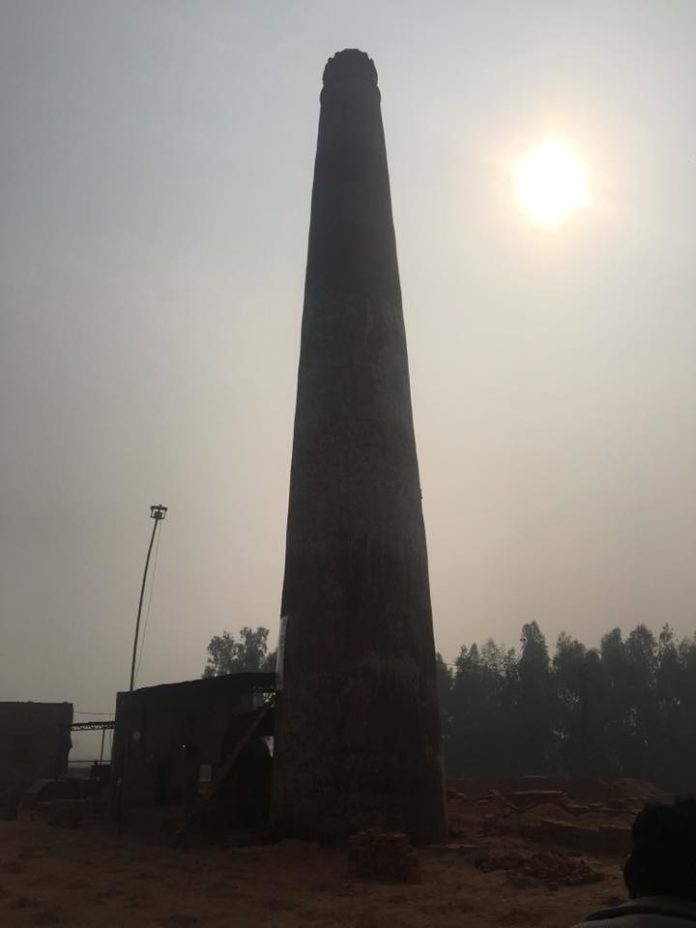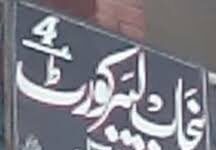By Muhammad Luqman
Haji Muhammad Ikram, the owner of a brick kiln located on the outskirts of Pakistan’s eastern city of Lahore rightly boasts of his brick manufacturing facility as the Chimney of the kiln no more emits black smoke and the fuel cost has also come down by 40 percent. This change, he attributes to the technology he first witnessed in kiln clusters dotted across Nepal’s districts of Bhaktapur, Dhading, and Biratnagar where the design and construction of zigzag kilns – a new configuration is producing high quality bricks at lower costs and with fewer harmful emissions. “I along with other brick kiln owners from Punjab visited Nepal and had first hand knowledge of the zigzag technology,” Ikram says.  Nepal’s International Centre for Integrated Mountain Development (ICIMOD) and the Federation of Nepal Brick Industries (FNBI) have been instrumental in the transfer of new kiln technology not only to Pakistan but also Bangladesh and India. Brick kilns rank among the most notorious sources of pollution in South Asia, emitting thick black smoke filled with carbon monoxide, sulphur dioxide, and particulate matter such as black carbon. Pakistan and India especially need to overcome the environmental pollution problem due to smog that brings life to a halt in central parts of Pakistan and northern India every winter. This sector has beem using low-cost fuels including coal, local biomass, plastic, waste oil, worn out tires and other materials. That not only to the degradation of environmental conditions but also affects the health of both human beings and animals in the vicinity of the kilns.It is estimated that 4.5 million people work in the brick kilns. Currently, the Fixed Chimney Bull’s Trench Kiln (FCBTK) is the most common design of brick kiln and it contributes significantly to poor air quality that adversely impact human health and vegetation. For three days, conference participants discussed means to convert existing FCBTKs to zigzag kilns, which are also more earthquake resistant. In the past, some brick manufacturers in Pakistan tried to bring down the emissions level by adopting other forms of kiln technology but it only reduced brick quality and overall productivity. “We adapted [the zigzag kiln] to our context and further developed it. Air pollution is a complex problem that no single country can solve,” says Mahendra Bahadur Chitrakar, the FNBI President. There are about 138,000 brick kilns in South Asia. Of these, around 18,000 are located across Pakistan that produce 45 billion bricks annually. The central Pakistan province of Punjab is home to 10300 brick kilns. Punjab government has recently announced to promote zigzag technology in the brick sector to improve the ambiance presently affected the high levels of SOX and NOX gases , considered to be responsible for climate change in this part of the world. “ We will share the cost of change in the structure configuration of the brick kilns as a part of technology transfer,” says Punjab Minister for Environment , Zakia Shahnawaz Khan. The brick kiln owners believe that the technology may prove a blessing for Pakistan with improvement in the environment conditions.
Nepal’s International Centre for Integrated Mountain Development (ICIMOD) and the Federation of Nepal Brick Industries (FNBI) have been instrumental in the transfer of new kiln technology not only to Pakistan but also Bangladesh and India. Brick kilns rank among the most notorious sources of pollution in South Asia, emitting thick black smoke filled with carbon monoxide, sulphur dioxide, and particulate matter such as black carbon. Pakistan and India especially need to overcome the environmental pollution problem due to smog that brings life to a halt in central parts of Pakistan and northern India every winter. This sector has beem using low-cost fuels including coal, local biomass, plastic, waste oil, worn out tires and other materials. That not only to the degradation of environmental conditions but also affects the health of both human beings and animals in the vicinity of the kilns.It is estimated that 4.5 million people work in the brick kilns. Currently, the Fixed Chimney Bull’s Trench Kiln (FCBTK) is the most common design of brick kiln and it contributes significantly to poor air quality that adversely impact human health and vegetation. For three days, conference participants discussed means to convert existing FCBTKs to zigzag kilns, which are also more earthquake resistant. In the past, some brick manufacturers in Pakistan tried to bring down the emissions level by adopting other forms of kiln technology but it only reduced brick quality and overall productivity. “We adapted [the zigzag kiln] to our context and further developed it. Air pollution is a complex problem that no single country can solve,” says Mahendra Bahadur Chitrakar, the FNBI President. There are about 138,000 brick kilns in South Asia. Of these, around 18,000 are located across Pakistan that produce 45 billion bricks annually. The central Pakistan province of Punjab is home to 10300 brick kilns. Punjab government has recently announced to promote zigzag technology in the brick sector to improve the ambiance presently affected the high levels of SOX and NOX gases , considered to be responsible for climate change in this part of the world. “ We will share the cost of change in the structure configuration of the brick kilns as a part of technology transfer,” says Punjab Minister for Environment , Zakia Shahnawaz Khan. The brick kiln owners believe that the technology may prove a blessing for Pakistan with improvement in the environment conditions.















